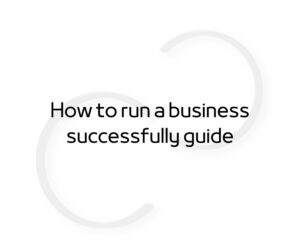I want to show you how to start a dropshipping business. It can be a viable and exciting way to launch your e-commerce journey and start making real money. Think about low barriers to entry and scalability, making it ideal for new entrepreneurs. However, do you know how to start a dropshipping or how to set up a dropshipping store? Let’s see the details and learn something!
Selling is essentially a transfer of feelings.
Zig Ziglar

What is a dropshipping business
I want to begin by telling you what dropshipping is – it’s a retail fulfillment method where a store doesn’t keep the products it sells in stock. Instead, when a customer places an order, the store forwards it to a third-party dropshipping supplier who packages and ships the product directly to the customer. Essentially, you act as a middleman, connecting buyers with products without physically handling them yourself.
Pros and cons of dropshipping
Here’s a breakdown of key dropshipping features:
- No inventory – this means you don’t need to invest in upfront inventory purchases or manage storage space.
- Scalability – you can easily expand your product range without additional inventory investment.
- Flexibility – you can manage your business from anywhere with an internet connection.
- Lower startup costs – compared to traditional e-commerce, dropshipping requires less initial capital.
However, dropshipping also comes with some challenges:
- Lower profit margins – you compete with other dropshippers and retailers for the same products, leading to potentially lower profit margins.
- Limited control – you rely on the best dropshipping supplier for product quality, shipping times, and customer service.
- Inventory fluctuations – suppliers might run out of stock, impacting your sales.
The dropshipping business model explained
So, once again – the dropshipping business model is a retail fulfillment method where you, the store owner, don’t physically hold the products you sell. Instead, you act as a middleman, connecting customers with products from external suppliers with dropshipping stores. Here’s the breakdown:
1. Customer orders – the customer places an order on your online store.
2. You forward the order – you receive the order and forward it to your chosen supplier.
3. Supplier fulfills order – the supplier picks, packs, and ships the product directly to the customer, typically under your brand name.
4. You keep the profit – you earn the difference between your selling price and the supplier’s cost.
Comparison dropshipping to traditional e-commerce
Traditional e-commerce involves buying inventory upfront, storing it in a warehouse, and fulfilling orders yourself. This requires significant investment in stock and logistics infrastructure.
Dropshipping, on the other hand, eliminates inventory management and fulfillment burdens. You act as the online storefront, promoting products and processing orders. The supplier handles everything else: storing, packing, and shipping the products directly to your customers, under your brand name.

Evolution of the dropshipping business model
The dropshipping model has come a long way since its early days of manual order processing and limited supplier options. Today, several factors contribute to its growing popularity:
- Automated Platforms: Tools like Shopify and Spocket offer seamless integration with suppliers, streamlining order processing and inventory management.
- Integrated Marketplaces: Platforms like AliExpress and Oberlo provide access to a vast network of suppliers and products, expanding your reach and options.
- Improved Technology: Technological advancements enable real-time inventory updates, efficient communication with suppliers, and better order tracking for customers.
Let’s see the number of digital buyers worldwide in a couple of years:
(Feb 19, Source)
Dropshipping business for beginners
Here I have some info about dropshipping for beginners. Are you thinking of creating an e-commerce business but are overwhelmed by inventory management and logistics? I think that dropshipping could be your answer! This guide outlines the essential steps to help you start:
Short dropshipping tutorial
In simple words this is how to drop ship:
- Find your niche, research trending markets and choose products you love.
- Explore options like Shopify, Wix, or Spocket based on your needs and budget and choose the right platform.
- Research reviews, product quality, and shipping times before selecting partners and reliable suppliers.
- Design a user-friendly dropshipping website with clear product information and secure checkout.
- Utilize social media, paid advertising, and SEO to reach your target audience.
A hot list of best product ideas for dropshipping
So, here you have it, a nice list of best dropshipping product ideas:
| Category | Product ideas | Target audience |
| Sustainable | Bamboo straws, reusable makeup wipes, organic cotton clothing, beeswax wraps, plant-based cleaning products | Eco-conscious consumers |
| Smart Home | Smart plugs, security cameras, voice-activated assistants, robot vacuum cleaners | Tech-savvy homeowners |
| Personalized | Phone cases, jewelry, water bottles, tote bags (with customization options) | Individuals seeking unique items |
| Fitness | Activity trackers, resistance bands, yoga mats, workout apparel | Health and wellness enthusiasts |
| Travel | Packing cubes, portable chargers, neck pillows, water bottles | Frequent travelers and adventurers |
| Home Office | Ergonomic keyboards, blue light glasses, noise-cancelling headphones, desk organizers | Remote workers and home office enthusiasts |
| Pet Tech | GPS trackers, interactive toys, self-cleaning litter boxes, personalized pet tags | Pet owners |
| Gaming | Mechanical keyboards, gaming headsets, RGB mousepads, controller grips | Dedicated gamers |
| Kitchen | Electric spiralizers, air fryers, portable blenders, single-serve coffee makers | Busy individuals and families |
| Seasonal & Trend-Driven | Research popular items based on upcoming holidays, events, or social media trends | Trendsetters and seasonal shoppers |
The best dropshipping business platforms
Let me show you the best dropshipping platforms now. Choose wisely, because there are many dropshipping websites!
1. Shopify dropshipping platform
- Pros: Highly customizable, scalable, vast app store, user-friendly interface, omnichannel selling, reliable support.
- Cons: Monthly subscription fees, transaction fees, and additional app costs can add up.
- Pricing: The basic Shopify plan starts at $29 per month, with higher tiers offering more features and functionalities.
- Best for: Entrepreneurs who want a fully customizable and scalable platform with access to a wide range of features and apps.
2. Wix dropshipping platform
- Pros: Easy to use with a drag-and-drop website builder, affordable pricing, built-in marketing tools, and mobile-friendly templates.
- Cons: Limited app integrations compared to Shopify, fewer dropshipping-specific features.
- Pricing: Business & eCommerce plan starts at $23 per month, with higher tiers offering more storage and bandwidth.
- Best for: Beginners who want an easy-to-use platform with affordable pricing and built-in marketing tools.
3. Spocket dropshipping platform
- Pros: US and EU-based suppliers with faster shipping times, product curation and sourcing tools, automatic inventory updates, and built-in payment processing.
- Cons: Limited product selection compared to other platforms, a monthly subscription fee.
- Pricing: Free plan with limited features, paid plans start at $9 per month.
- Best for: Dropshippers who want to focus on US and EU-based products with faster shipping times and built-in tools for product sourcing and management.
4. Oberlo dropshipping platform
- Pros: Free basic plan, easy integration with Shopify, one-click product imports from AliExpress, order tracking and fulfillment.
- Cons: Limited product selection and quality control, relies solely on AliExpress suppliers, requires paid Shopify plan for advanced features.
- Pricing: Free basic plan with limited features, paid plans start at $29 per month.
- Best for: Beginners who want a free and easy way to start dropshipping with AliExpress products.
5. Modalyst dropshipping platform
- Pros: Wide range of high-quality, branded products from US and EU suppliers, private label options, custom packaging, order tracking, and fulfillment.
- Cons: Higher product costs compared to other platforms, a monthly subscription fee.
- Pricing: Free trial, paid plans start at $39 per month.
- Best for: Established businesses who want to offer high-quality, branded products with private labeling and custom packaging options.

How to set up a dropshipping business store
Let’s focus now on the core of the dropshipping business – the store. Here is how to set up a dropshipping store:
Choose your platform
As mentioned before, popular options include Shopify, Wix, Spocket, and Oberlo. Choose the one that aligns with your needs, budget, and technical expertise. Consider factors like:
- How much control do you want over your store’s design and functionality?
- Are you comfortable with website building and management?
- Does the platform offer the types of products you want to sell?
- Does it easily connect with your chosen suppliers?
- Can you afford the monthly subscription and transaction fees?
Research and find reliable dropshipping suppliers
1. Before diving in, list your needs. Consider product niche, quality expectations, shipping timeframes, customer service level, budget, and desired profit margin.
2. Utilize directories like SaleHoo, platform marketplaces like Spocket, and online searches to discover potential partners.
3. Don’t settle for the first option. Compare product catalogs, shipping details, pricing, customer service policies, and inventory management practices. Read online reviews and contact them directly for responsiveness.
4. Order samples to assess quality and branding. For long-term partnerships, negotiate pricing and terms for better rates.
5. Remember, reliable suppliers are key. Prioritize quality, timely shipping, and responsive customer service.
Bonus Tip: Check the supplier’s website for professionalism and information. Steer clear of suspiciously low prices, often indicative of poor quality or scams.
Design your dropshipping website and add products
Build a user-friendly and visually appealing website that reflects your brand identity. Use clear product descriptions, professional photos, and competitive pricing. Some platforms offer themes and templates to guide you.
Integrate your chosen dropshipping app or manually add products based on your supplier selection. Ensure accurate product descriptions, specifications, and high-quality images.

Set up payment, shipping rates, and policies
Choose a secure payment gateway to process customer payments smoothly. Most platforms offer built-in or integrated options.
Determine your shipping methods, rates, and policies based on supplier locations, product sizes, and target audience. Be transparent about delivery times and costs.
Optimize for search engines (SEO)
Incorporate relevant keywords into your website content, product descriptions, and titles to improve organic search visibility. Utilize SEO tools if needed.
Utilize dropshipping business advertising
I know that visibility is crucial for dropshipping success. Let’s focus for a bit on dropshipping advertising and marketing.
Why ads for dropshipping matter
Thanks to ads for dropshipping, you can reach potential customers searching for your products on platforms like Facebook, Instagram, and Google. You are building recognition and trust, and increasing your chance of attracting new customers. By using ads you entice viewers with compelling visuals and messaging, converting them into paying clients.
Types of dropshipping ads to consider
- Social media ads
Target specific demographics and interests on platforms like Facebook, Instagram, and TikTok. Utilize captivating visuals and engaging messages to capture attention.
- Google ads
Target relevant keywords to reach people actively searching for products like yours. Optimize your ad copy and landing pages for conversions.
- Influencer marketing
Partner with relevant social media influencers to promote your products to their established audience.
Best practices for dropshipping advertising
- Define your ideal customer and tailor your ads accordingly.
- Use professional product photos and engaging ad creatives.
- Highlight product benefits and use strong calls to action.
- Reach the right audience on relevant platforms and channels.
- Monitor results and adjust your campaigns for optimal impact.
Expand your marketing arsenal
- You can also build a community on platforms like Instagram and TikTok. Share engaging content, respond to comments, and run interactive contests.
- Try to create informative and valuable blog posts, articles, or videos around your niche to attract organic traffic.
- Build an email list and send personalized newsletters with promotions, product updates, and exclusive offers.
Start small, experiment with different marketing strategies, and gradually scale up based on results. Continuously refine your campaigns based on data to maximize your return on investment (ROI). Build trust with your audience by showcasing your brand personality and values.
Bonus Tip: Stay updated on the latest trends and best practices in e-commerce marketing. Utilize online resources, industry blogs, and courses to continually improve your marketing skills.
Selecting the best dropshipping products
When it comes to selling, it all begins with a thing to sell. Let me show you how to choose the best dropshipping products for your business:
1. Master your niche:
- Go hyper-specific – target passionate customers with an unmet need.
- Ride the wave – use trends, but remember long-term potential.
2. Research ruthlessly:
- Scour supplier options – quality, shipping, and minimum orders matter.
- Crunch the numbers – ensure healthy profit margins after all costs.
- Spy on competitors – learn from their wins and avoid their failures.
3. Pick profitable products:
- High demand, low competition – easier to sell, harder to drown out.
- Scalable – room to grow without reinventing the wheel.
- Avoid seasonality – unless you love winter storage fees.
Remember:
- It’s a learning curve – test, analyze, adapt (repeat).
- Don’t be trendy, be smart – trends can fade, and quality lasts.
- Invest in quality – it builds trust, reviews, and loyal customers.

Advanced strategies and tips for dropshipping
Ready to take your dropshipping business to the next level? Partner with multiple suppliers, negotiate better rates, and explore new sales channels to scale your business. Here’s your dropshipping guide to success:
Scale up a dropshipping business
1. Optimize your operations:
Utilize dropshipping apps to automate order fulfillment, inventory updates, and marketing tasks.
Delegate non-core tasks like customer service, social media management, and content creation to free up your time.
Analyze and streamline your processes to optimize workflow and save time.
2. Expand your product range:
Identify best-selling products for dropshipping and explore similar or complementary offerings.
Carefully diversify your product selection while staying within your expertise.
Introduce new products with special promotions to test market interest.
3. Enhance marketing & customer acquisition:
Leverage data and analytics to reach the right audience with more effective ads.
Explore beyond your current marketing mix (e.g., video ads, influencer marketing).
Offer exceptional customer service, reward programs, and exclusive deals.
4. Build partnerships & leverage technology:
Partner with relevant influencers to reach a wider audience. Expand your reach through platforms like Spocket and Modalyst. Find solutions to automate tasks, improve efficiency, and gain insights.
The most common mistakes in dropshipping
It’s normal for people to make mistakes. So maybe we learn from them? Here are the most common mistakes in dropshipping:
| Category | Mistake | Impact | Tip |
| Product Selection | Choosing low-quality or trendy products | Low sales, poor customer reviews, lost trust | Focus on demand, quality, and profit margins. |
| Not considering shipping costs and seasonality | Lower profits, dead stock | Factor in shipping costs and avoid seasonal products. | |
| Ignoring competition | Oversaturated market, difficulty standing out | Analyze competition and choose less crowded niches. | |
| Suppliers | Relying on a single supplier | Risk of stockouts, limited options | Diversify suppliers and build strong relationships. |
| Choosing unreliable suppliers | Poor product quality, slow shipping, communication issues | Prioritize quality, communication, and shipping times. | |
| Not negotiating pricing and terms | Lower profit margins | Negotiate for better deals, especially for larger orders. | |
| Marketing & Operations | Neglecting marketing | Low website traffic, lack of sales | Implement a clear marketing strategy with targeted ads and engaging content. |
| Inadequate customer service | Negative reviews, lost customers | Prioritize prompt responses and effective problem-solving. | |
| Ignoring data and analytics | Missed opportunities for improvement | Track key metrics and adapt your strategies based on data. | |
| Failing to adapt and scale | Stagnant business growth | Be flexible and adapt to market changes and customer feedback. | |
| Additional Mistakes | Unrealistic expectations | Discouragement, lack of motivation | Set realistic goals and understand the effort required. |
| Poor website design and user experience | High bounce rates, low conversions | Create a user-friendly and visually appealing website. | |
| Not complying with legal regulations | Penalties, legal trouble | Understand and comply with all relevant laws and regulations. | |
| Ignoring intellectual property rights | Legal issues, brand damage | Avoid selling products that infringe on trademarks or copyrights. |
Conclusion – Dropshipping business tutorial
Dropshipping offers a compelling path to e-commerce success, especially for those starting. While challenges exist, the low barriers to entry, scalability, and potential for high-profit margins make it an attractive option. Remember, success requires dedication, a strategic approach, and continuous learning. Don’t be afraid to experiment, analyze your data, and adapt your strategies based on results!

FAQ: Dropshipping business tutorial
Q1: What is dropshipping?
Dropshipping is a retail fulfillment method where a store doesn’t keep the products it sells in stock. When a customer places an order, the dropshipping store forwards it to a third-party supplier who then packages and ships the product directly to the customer.
Q2: What are the pros and cons of dropshipping?
Pros: No inventory management, scalability, flexibility, and lower startup costs.
Cons: Lower profit margins, limited control over product quality and shipping times, reliance on suppliers.
Q3: How do I start a dropshipping business?
To start a dropshipping business, you need to:
- Choose a niche and research trending markets.
- Select a dropshipping platform like Shopify or Wix.
- Find reliable dropshipping suppliers.
- Design a user-friendly website for your store.
- Market your store using social media, paid advertising, and SEO.
Q4: Can I start dropshipping for free?
While some dropshipping platforms offer free trials or basic plans, you may still incur costs for things like marketing, domain registration, and additional features.
Q5: What are the best dropshipping products to sell?
The best dropshipping products are often niche-specific, high-quality, and in-demand items with healthy profit margins. Complete careful research, analyze trends, and consider your target audience’s needs and preferences.
Follow my X (Twitter)!
That’s a wrap for today’s post. Remember, the future is yours to conquer. Check out my business skills booster. Until next time!




